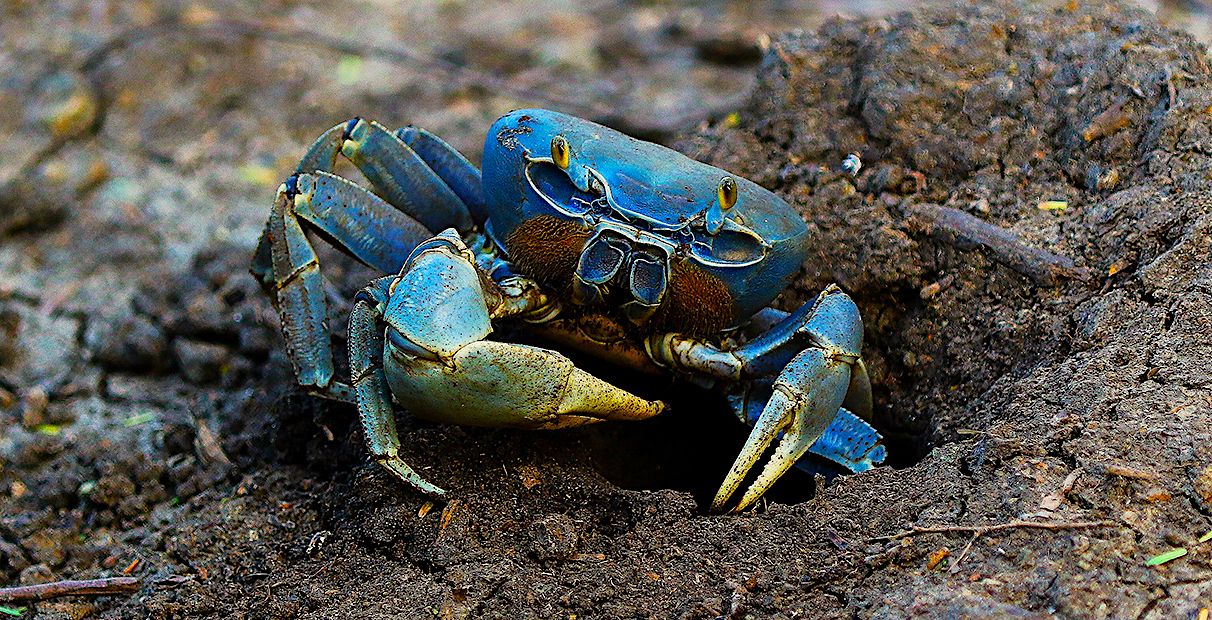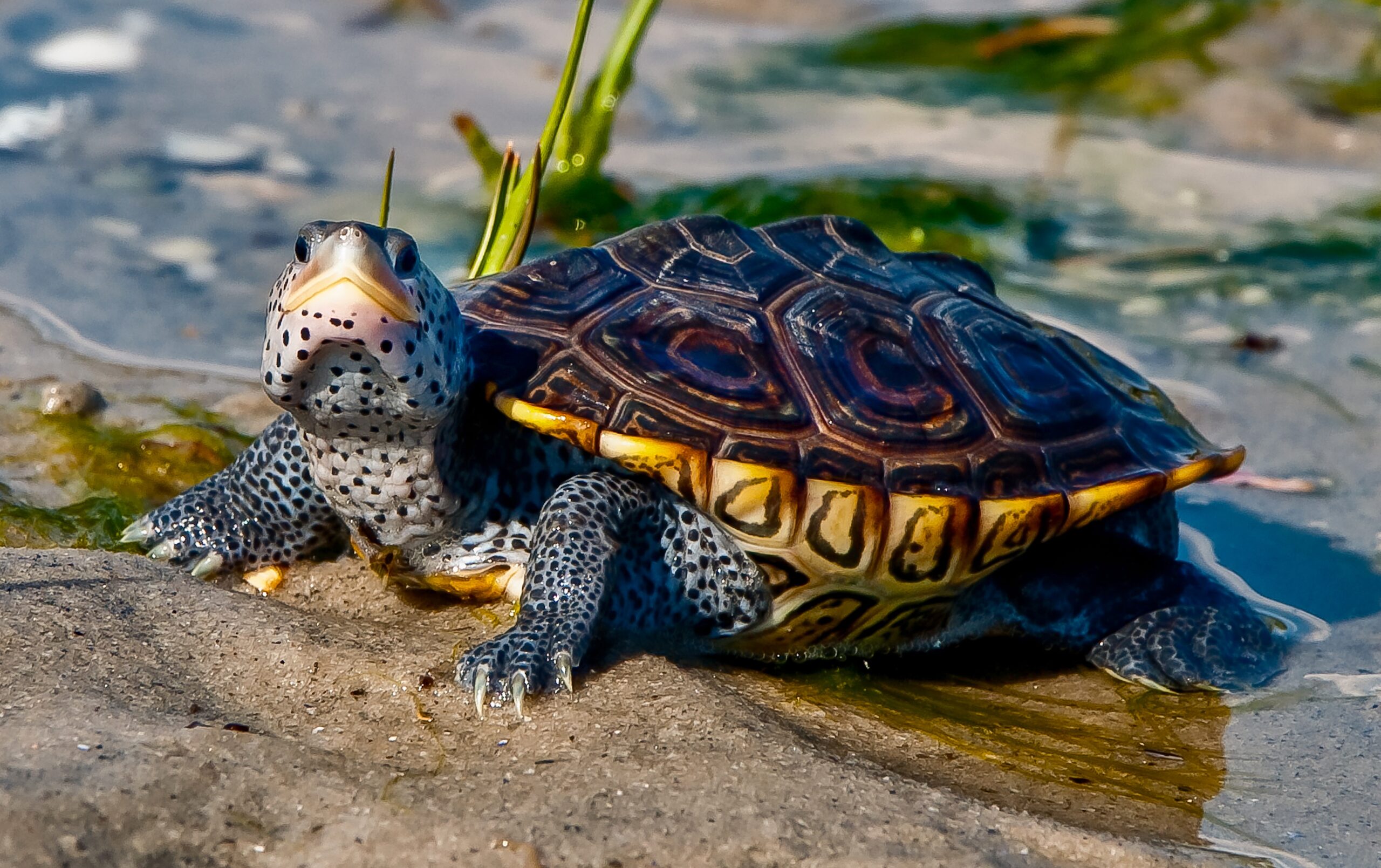What’s the Deal with that Big Blue Crab on the Beach?
A new species has arrived in North Carolina — and you might even find one in your garage.

There has been a flurry of recent reports of blue land crabs in the Carolinas, which is north of the species’ expected range. North Carolina Division of Marine Fisheries (NCDMF) biologists are requesting public assistance to help them learn more about where the species is spreading.
Visitors from the South
The blue land crab lives along the Atlantic coast from Brazil to South Florida, but increasingly has appeared in the Carolinas. Researchers do not yet know the extent of the crab’s presence in the region nor its impact on the environment and other wildlife. Whether the species arrived through natural expansion of its range or human-mediated sources also is not clear.
In September 2022, the South Carolina Department of Natural Resources (SCDNR) created a public hotline to report sightings of the crab. This year, NCDMF has followed suit.
Public Sightings
From September to November 2022, the SCDNR received 100 reports and confirmed 66 sightings of the blue land crabs from Savannah to Myrtle Beach, but mostly in the Charleston area. Reported sightings came from a range of habitats: estuaries, forests, beaches, roads, ditches, lawns — even home garages.
Although occasional sightings of the crab began in South Carolina in 2008, the first confirmed blue land crab sighting in North Carolina occurred just this past summer. In July, a blue land crab was spotted in Bogue Sound near Emerald Isle. Since then, sightings also have occurred in nearby Morehead City and areas in Carteret County.
Why It Matters
SCDNR and NCDMF are working together to figure out if these foreign crabs are displacing other species of crab or damaging natural habitats. Blue land crabs can create 6-foot-deep burrows, destabilizing sediment and destroying crops, gardens, lawns, parks, golf courses, and more. After heavy rain, the crabs are more likely to leave their underground burrows.
Officials warn that blue land crabs are difficult to catch. In addition to their speed at retreating into their burrows, the crabs each have a large claw, similar to a fiddler crab’s, that they can use to defend themselves.
Biologists encourage people to take photos and report any sightings here.
lead image credit: USFWS/Vieques National Wildlife Refuge.
Sara Mirabilio co-curates North Carolina Sea Grant’s award-winning Hook, Line & Science series, which originally published an earlier version of this story that she adapted from a news release from NCDEQ.
- Categories:


